Limp Handshakes and Auditory Bias: My Process of Applying for Headship
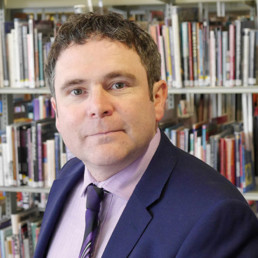
Written by Kevin Carson
Headteacher at The Royal Masonic School for Girls. A learner, an English teacher, and a dad to 2 fab girls. Originated in Liverpool, enjoying living in the Shires.
I have been attending a monthly Diversity, Equity, and Inclusion leadership programme with Diverse Educators since April 2021. It is led by @Ethical_Leader and @Angela_Browne, and it has uplifted, educated, and inspired me every month.
Hannah and Angie are clear and correct that DEI work is safeguarding work, that well embedded DEI makes school communities safer places. The aim of their programme is not to rush into anything in a knee-jerk way, but to listen, reflect, learn, and then start to put together a 3-to-5-year plan that works for each school: carefully planning sustained change over time.
At the start of this week’s session, mention was made of an excellent candidate for headship who so far has not been appointed and there was a feeling that this may at least in part be connected to his race and from that perhaps also in part to his strong accent. This anecdote stayed with me after the session, conscious as I am that over 96% of male and female headteachers in England are white, and with my own awareness of how frequently my accent was referenced when I was applying to be a Headteacher.
I have decided to share a couple of anecdotes relating to my applications for the post of Head at independent schools when my accent was considered a relevant factor.
I once applied for a Headteacher post where afterwards I was told by the head-hunters, “You were the preferred candidate, the first choice, but the Board have decided not to appoint. They were quite vague and evasive with us about why this was, and they could only give reasons such as ‘His handshake wasn’t strong enough’, whatever that means. I think you can draw your own conclusions from this, Kevin.” A few months later, the Bursar at that particular school later told me straight that the Chair of Governors didn’t wish for somebody from my background as Head of ‘his’ school.
On another occasion I attended a training session with one of the head-hunter firms, as part of a course for half a dozen applicants who they felt were close to headship. Afterwards, the course leader told me, “We agreed that you were the strongest candidate from the process we saw today. You are 100% ready to be a headteacher, but we think that you should seriously consider booking yourself in for elocution lessons because your accent will be the reason that you are not going to be appointed.” As an English teacher I know enough about language, culture, and identity to be able to reply that if a school didn’t wish to take me as I am then they weren’t the right school for me and I wouldn’t wish to be their headteacher.
For those who do not know me, as my About Me section says, I grew up in Huyton, Liverpool, a working-class area that is in the second most deprived borough in England, and I have quite a strong Liverpudlian accent. The Chair of Governors at my then current school did make a decision to directly address my accent in his reference, raising it as a potential consideration before clarifying why this shouldn’t be a factor in a Board’s thinking, pre-emptively calling this out as it were.
I am a straight, white, male headteacher of an independent school. I have a 1st class degree, and an M.Phil. from Trinity College, Cambridge – there is a whole bunch of privilege there. At the time of the anecdotes above I was also Interim Head of The Grammar School at Leeds, a large, diamond model school. I had quite a strong CV on paper, and to be honest I suspect that in a comparable way to my accent wrongly being deemed relevant at interview, it is also not inconceivable that my educational background helped get me to the interview stage. Some Boards like this kind of thing, taking it to signify far more than it should.
I want to be clear that this is not a post about bias and class in the independent sector. I have worked in four independent schools, valued them all, and have found them all to be far more egalitarian workplaces than some might imagine. Very many people working in the independent sector desire to do social good and to help to create a more inclusive and sustainable world. More specifically, in RMS, I have found a values-led school with a strong ethos that is prepared to think differently about all aspects of education. I feel appreciated there for who I am, and my accent or social background aren’t referenced in relation to the job that I do because nobody feels they are relevant.
But I have shared a few of my experiences here, (and each of these are only from six years ago), as anecdotal evidence that bias is still out there in appointing Heads. The education system would be a better place if this were not the case, and we all need to consider the ways in which we can demonstrate commitment to a diverse, equitable, and inclusive staff community in our schools. For me, it was bias in relation to attitudes to social class, and a little bit of auditory bias. The government figures from 2019 indicate the extent to which this is a far greater issue in relation to race and ethnicity.
The data shows:
- There were around 22,400 headteachers in 2019, and over two-thirds of those (around 15,100) were women
- 96.1% of female headteachers were White (92.6% White British, 1.7% White Irish and 1.8% White Other)
- 97.0% of male headteachers were White (92.9% White British, 2.1% White Irish and 2.0% White Other)
A few final thoughts on this topic for now from me:
- I hope and want to believe this bias and prejudice is receding, gradually diminishing. I believe in the transformative power of education as a force for social change that makes a positive difference. Interestingly, the Foundation that found my background not the right fit for them and that blamed it on my limp handshake have changed their entire Board since then, and there are now seven women and three people of colour on a more diverse Board there. You would like to think this would not happen again.
- @jillberry102 was a great source of advice and support throughout my applications for headship. She always said that in the end you find the right school for you, the right fit for you. I do think there is something in this. I can now view my earlier experiences as lucky escapes.
- There is a great deal I have taken from the Diversity, Equity, and Inclusion leadership course, both from the leaders and from the brilliant colleagues that are attending with me from both sectors, and from the UK and overseas. I am sure I will write about this learning again, including about how we strive to apply it at RMS. We have just appointed two DEI leads at RMS – they are brilliant colleagues who will do a great deal of good in this role. My first show of support for them was to sign them up for Hannah and Angie’s training course with Diverse Educators.
We Wish You an Inclusive Christmas

Written by Shuaib Khan
Shuaib is a teacher, sociologist, poet and podcaster.
As the holiday season approaches, this can become a powerful point of reflection for schools on how inclusive their practices are. This is especially the case for how schools cater for the needs of staff and pupils who have mixed feelings about the festive period as they don’t celebrate Christmas. In this blog (originally published on the Leader’s Digest), we will be looking at ten ways your school can make Christmas celebrations more inclusive.
What is inclusion?
Diversity, inclusion, equality and equity are used interchangeably, but they have different meanings and interpretations. Many schools have their own equality, diversity and inclusion (EDI) leaders in an effort to promote fairness, access and equity. During the Christmas period, there is a need to think about alternative provisions for those who, for whatever reason, do not wish to partake in festive activities. So, how do we define ‘inclusion’?
The diversity network Diverse Educators (DiverseEd) provide us with the following definition of ‘inclusion’.
Inclusion is the achievement of a work environment in which all individuals are treated fairly and respectfully, have equal access to opportunities and resources, and can contribute fully to the organisation’s success.
School communities are not homogenous and not every member of staff or pupils will celebrate Christmas. For some, the holiday season can evoke bad memories and the feeling of being excluded as everyone else enjoys school productions, secret Santa, Christmas lunch and the rest of the exciting festive activities. So, how can your school make Christmas inclusive?
DiverseEd reminds us that inclusion should not be viewed as just an add-on but rather as an institution-wide point of reference to meet the needs of everyone in your care. Inclusion should be practiced all year round and not just at the sight of a Christmas tree or at the smell of freshly baked mince pies. The conversation about inclusion is nuanced, requires deep personal reflection and remembering that the holiday season can bring mixed feelings. Leader’s Digest recommendations to make Christmas more inclusive is part of, rather than a substitute for your school-wide equality, diversity and inclusion ethos.
Ten ways my school can make Christmas more inclusive
Create a diverse planning committee
Planning Christmas events requires planning and preparation. As a school leader, having a planning committee that is representative of your school community is one way you can ensure a diverse range of views, ideas and thoughts are heard. Planning committees could be made up of support staff, including teaching assistants and also staff who don’t celebrate Christmas. Your school’s Christmas events planning committee can be an excellent way of understanding the individual needs of your fellow colleagues and also of pupils. In making necessary adjustments or alternative arrangements for those who don’t celebrate Christmas, a diverse planning committee can help identify challenges and collaboratively find solutions.
Having an interfaith calendar
As the festive season approaches, it is important to remember that other faiths will have important events and traditions taking place too and these deserve to be acknowledged and celebrated too. For example, Hanukkah which is an eight-day long Jewish festival begins on November 28th and ends on December 6th. Also, Buddhists celebrate Bodhi Day on December 8th. Both of these religious events take place as the Christmas festive season commences. Your school’s interfaith calendar can be a powerful tool to plan celebrations for these respected faiths all year round and make staff and pupils feel respected and valued. An interfaith calendar can also help avoid scheduling mistakes, plan celebrations and guide your schools religious/PSHE curriculum.
Allowing staff and pupils to opt out
An important element of inclusion is offering people options. Staff and pupils should be allowed to opt out of Christmas celebrations if they wish to without fear of judgement or sanction. Christmas can be a really challenging time for some people and as a school leader, if a colleague or pupil doesn’t wish to partake, their wishes should be respected. A big part of inclusion is respecting others, their preferences and allowing them to have the autonomy to not participate.
Make events optional/voluntary
As with allowing staff and pupils to opt out, festive events should be optional and voluntary. Organising Christmas plays or concerts is often done in non-contact time and a lot of invisible labour takes place to make these events happen. School leaders should reiterate that attending events is always optional and that there will be no pressure or judgement if they cannot attend. For some staff, it is not necessarily the case of being unable to make the commitment to after school rehearsals or concert preparation, but rather they have additional responsibilities outside of work. The wellbeing of staff is of paramount importance in making festive events fulfilling and worthwhile for all.
Provide food options
Food is an integral part of Christmas. To ensure all staff and pupils feel included, just as your school canteen would do, catering for all dietary requirements and personal preferences is key. For example, a good idea would be to have separate tables with vegetarian, vegan, gluten-free, Halal, or Kosher food. Another option would be to relay information to pupils and parents about the options and alternatives available during the Christmas period. These are small provisions which will make staff and pupils feel more welcome and included in the Christmas festivities. Going forwards, it is also a really important way of getting to know your staff and pupils. Further to this could be to avoid offering alcohol to staff who don’t drink to avoid offending or alienating them.
Ask staff what they want
How many times have you been stumped on ideas for a secret Santa gift or just unsure if a colleague will like how the school celebrates Christmas? Asking staff what they want is an excellent way to plan Christmas celebrations in your school. This does not mean you have to hand over powers to staff but rather use their intricate knowledge of the pupils to guide your decision making. As a school leader, having ideas put towards you from staff can help refresh how your school embraces the festive season. In liaison with staff, certain practices from previous years that didn’t go well can be rectified or replaced. For example, Christmas jumper day. If a significant proportion of your pupils cannot afford to participate, they will feel excluded. This could easily be replaced with something more cost effective for the local community such as a Christmas tombola. Asking staff, who know the pupils and the school community incredibly well, this can help make Christmas a more inclusive experience for everyone.
Be mindful of the cost
Recently Teaching Assistant’s Digest completed a series of articles on TA pay. Christmas is an additional cost, especially for TAs and support staff who are already facing financial hardships. A £50 staff Christmas meal may seem like a small amount but for support staff, that £50 is days worth of earnings. Part of an inclusive model is including groups who have historically been excluded and TAs definitely fit this criteria. Where possible, if staff events are free or at a reduced cost, SLT should be mindful of this. It’s all good inviting everyone which could easily be interpreted as ‘inclusion’ but what about those who cannot afford to attend? Just because everyone has a seat doesn’t mean everyone can afford to eat! School leaders should also encourage support staff not to spend their own money on school Christmas events such as parties. If they do, an opportunity to reimburse them should be available.
Offer holidays to staff and pupils of other faiths
Again, a part of having an interfaith calendar is knowing exactly when other faiths have their traditions and celebrations. Christmas is a holiday season for everyone but throughout the academic year, other faiths will have traditions and festivals that will require staff and pupils to have time off to observe and celebrate. For example, Eid or Diwaali. Staff and pupils should be entitled to an appropriate number of days to celebrate their religious festivals. As a school leader, it is important to empower your staff with the confidence to request time off and for pupils to feel as though their school values their faith. This can also be done by allowing all staff and pupils to understand the importance of different religious festivals through embedding these into the curriculum and the schools wider inclusive ethos.
Invite feedback
As a school leader, first and foremost, you are a reflective practitioner. The nature of education is that there will always be opportunities to reflect, improve and do better. If a specific event didn’t go too well, encouraging your staff to come forwards and provide feedback is how you can get things right next time. Inviting feedback is the ultimate way of highlighting what worked well and finding areas for development. Feedback could be anonymous, drop-in, staff surveys or asking the pupils about how they found Christmas celebrations at school.
See inclusive practices over Christmas an extension of inclusion
Inclusion should not be something that is centred around December or nativity. As a school leader, it is important to realise that creating a more inclusive festive period for everyone at your school is one step in the right direction. Inclusion is an on-going cultural process of learning, understanding, supporting and of course, including others. Christmas is an opportunity to embed inclusive practices which themselves should permeate throughout your school and enrich everyone along the way.
Although this list is not exhaustive, we hope that it can give you some food for thought. How are you going to make Christmas an inclusive experience in your school? At Leader’s Digest we would love to hear from you.
Inclusion - A Parenting Perspective
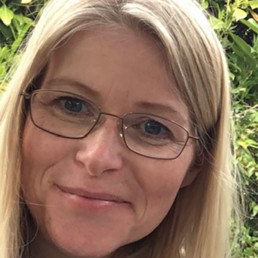
Written by Helen Weston
Helen has two children with significant medical needs which has resulted in her becoming their part time nurse, teacher and advocate whilst simultaneously attempting to be a reasonable parent! Prior to this she worked in Early Years and family support.
Inclusion is a perpetual discussion amongst both teachers and parents alike. This is likely because it has a number of different interpretations which aren’t always agreed upon, it can also be both an ethos and an action. I want all children to feel safe and secure, welcome and considered whilst being educated. My son wants to be remembered that he exists.
As a parent of two children with chronic health needs, the navigation of an equitable education for them has been incredibly challenging. During the last 11 years my children have experienced the best and worst of inclusive practices in various schools.
Effective inclusive practice in my experience always comes from attitudes and ethos and never from expectations of statutory requirements. Funding has been entirely irrelevant, no amount of funding can influence cultural shift. Ethical leaders create that, not money. If a Head is unable to easily explain how their policies and planning sit within the Equality Act, for example, a rigid 100% attendance award policy, yet has an inclusion poster in their reception area, then as a parent, I know my child will never feel a sense of belonging or self worth in this school.
Schools that are child centred rather than data driven always value inclusion, they offer a genuine partnership with families and a proactive approach, again this starts with leadership and is embedded within the every day workings of the school. Teachers who are prepared to listen, reflect and act, can make a huge difference to a child’s perception of their illness or disability and reduce their feelings of difference. This enables them to be more readily able to learn.
One of my children has only ever been able to attend school on a part time basis due to his health. For 4 years he attended his school every morning, his school thought they were inclusive for facilitating a part time timetable, yet he was never offered a broad and balanced curriculum. He was only ever taught Maths and English despite regularly requesting to learn science or do PE with his peers, but their timetable was rigid.
We eventually moved him to a neighbouring school, the difference in attitudes was remarkable. He was listened to and the timetable was swapped around. For the first time in his school career he did PE, science, & enrichment. He was 9 years old. He also took part in his first ever Christmas concert because the practices were moved to the mornings so he could be involved . He had real friends for the first time, adults had role modelled to them that he was an equally valuable member of the school community. His friends looked out for him, helped him, cared for him because this was the ethos of the school and these values were their norm.
At his previous school he had had long periods of time off unwell, upon return to school, staff and children alike would rarely ask after his well-being. In contrast, in his new school his teacher set up a video call with him and his classmates so they could have a chat and check in with one another.
She would also provide him with allergy safe treats when giving a whole class reward. He had never experienced this before. Ultimately inclusion was everyone’s responsibility and not just the role of the ‘Inclusion Manager.’ My experience identified that by outsourcing inclusion to just one individual, others were removed from ever having any consideration for inclusion.
School trips can be a real eye opener as to how inclusive schools are. We have had numerous experiences of schools not bothering to plan for accessibility or do risk assessments therefore having to do them myself last minute ( and on one occasion discovering the activity was unsafe for our son’s medical condition.)
Yet there have also been examples of how early planning and communication can enable trips to be successful, not just practically, but also emotionally positive. My son attended a school residential as a day visitor. The timings of his visits were chosen in collaboration with him, myself, school as well as the activity centre, to ensure he was able to access all the activities offered at that time safely. He was still allocated a room and a bed, his tube feeds were fitted around activities, pacing was done subtly, a special harness was used. Almost three years later, he still talks about that trip with such joyful memories.
The ‘what can we do’ approach is the best way of creating meaningful change, including the child & parents in working through solutions in partnership with schools. My youngest is now in secondary and I note with interest, their use of their term, ‘flexible’, over inclusion. Right now, this is what works best for my son, flexibility, trust and regular communication. Inclusion is not the same for every child but the essence of belonging should feel the same for all.
Toothless Lionesses
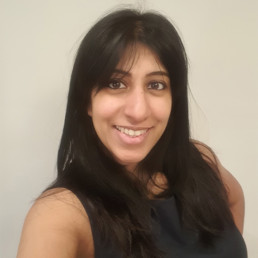
Written by Bhamika Bhudia
English teacher and lead teacher in a mixed comprehensive secondary school in North-West London. She tweets as MissMika_Eng
Does the “aggressive” Woman of Colour trope lead to a generation of toothless lionesses?
Women of colour have to navigate the western world with careful footing. Sidelined and stereotyped within the media and underrepresented at leadership tables, conducting herself in offices, classrooms and meetings is a difficult, political affair. Managing standing up for herself, being heard, demanding a seat at the table all the while not being deemed too aggressive, requires strategizing but at what cost? Surely this lack of freedom to express herself honestly and fully has detrimental effects on her confidence, self worth and identity as a whole?
In my quest to make my workplace and environment a more celebratory and inclusive place, I have had to take a real look inwards at my role as a woman of colour (a term I am still uncomfortable with), and I have had a rude awakening!
I have always considered myself (and I think have been considered) to be a confident woman. I am able to stand up for what I believe in, I have carved myself a seat at the table and my voice is one that is heard. But as policies are put into practice and ideologies around celebrating culture and acknowledging diversity are being discussed at that very table, I have come to question how many waves I actually make, how often I quietly avoid a stir and how many self-sabotory behaviours I demonstrate.
Diversity-hire:
According to the School Workforce Consensus (2019) only, 6.2% of assistant heads and deputies are from ethnic minorities and while women comprise 67% of the country’s headteachers, a mere 3.9% of them identify as non-white. The statistics speak for themselves, yet despite knowing this, every job and promotion I have ever gotten has been followed by inner doubt questioning whether I was a diversity hire. The odds are clearly stacked against me, but this toxic imposter syndrome based solely on my demographic is obviously very damaging. And it can’t be just me – I didn’t invent this notion or phrasing, it has to come from somewhere. I am very doubtful that I am the only one who has felt this way yet my achievements are continually downplayed in my mind because I happen to fit this box that ironically enough, isn’t actually getting filled in the real world!
Say my name!
It is now widely acknowledged that continual mispronunciation of people’s names is a microaggression and is damaging. Spending my entire life as Bhamika Bhudia has been tricky. I have always expected people not to get my name right to begin with – it’s an unusual name – and I take absolutely no offense when people don’t get it right away. I have been quick to correct them, the first, second and third time but after that, I drop it. I have worked with people for years that have continued to call me by some other moniker. Until this last year, I have let these aggressions slide for fear of being rude, making things awkward or making other people feel bad. It is not ok, and should not have taken me 37 years of life to realise this. It is my duty as a role model for children to address this but for my entire life, I have placed the feelings or others ahead of my own; clearly I did not feel my name was worthy enough of causing a stir.
Bite your lip:
On the same note, causing that stir is a real predicament for those in my demographic in far more contentious circumstances than pronunciations. I have heard many a story of meetings, conflicts and general grievances of women who look like me, shut down because they were deemed too “aggressive”. Conducting myself in sensitive circumstances is a tight-rope I tread very carefully on. I always say, with a strong hint or irony and an even stronger note of bitterness, that my life would be so much easier if I was a cryer. If, when it came to conflict, I was the sensitive one who could alleviate circumstances and even shift responsibility by showing my emotions and expressing my hurt/offense in a more “feminine” way. Now I’m not saying all tears are manipulatory nor am I condoning toxic femininity but there have been times and continue to be so where I am unable to express my offense at derogatory comments or behaviours towards me, no matter how professionally or politely I handle them, for fear of becoming the aggressor. I have bitten my lip, publicly and privately because when it comes down to it, I am afraid that I will be blamed for upsetting the other person despite being the offended party. I always assumed it was a “me” thing, perhaps even a “female” thing, but once again, this reflection has led me to connect the dots. Women of colour being branded and dismissed as “aggressive” is a historical thing; it does not stop at me nor did it begin there.
This post has been very difficult to write. I have taken a look at myself and honestly I do not like what I see. I thought I was strong, I thought I was a good role model and discovering that I am far from that has been a difficult discovery indeed. But now I have seen that despite my “aggressive” nature, I am still doing myself and every woman of colour after me, a huge disservice by bowing down, and sitting quietly. My teeth may have been blunted up until now, but at the risk of ending with a huge cliche, I will make sure my lioness comes out in full force, not only for myself but also for those I model my behaviour for.
The Psychology of Our Quarrels

Written by Russell Ridgeway
Russell Ridgeway is an American writer based in Budapest, Hungary. He writes in business, tech, and fashion as well as creative fiction. You can reach him by email (russell@lensawork.com), or on LinkedIn and other social media platforms.
Quarrels do happen in our everyday relationships, with our family members, significant others, co-workers, and friends. Is it normal to have them regularly? What can we do about them? Do they have to be ongoing, or are there specific ways to reduce their frequency and intensity? Let’s take a closer look at this actual and significant topic, and find solutions that could work.
There are those types of people who avoid conflicts in contact, sometimes both parties. In other relationships, one person tends to fight more than the other, or the people keep changing roles. And it is becoming a pattern, which they cannot handle well, as the people involved are not sure what to do. No wonder why; we lack this kind of education!
How Quarrels Work
By observing, analyzing, and coming up with solutions to your quarrels, you can make your life better. Doesn’t matter who you usually fight with. This is what you, or more ideally, both of you should be doing. Realize that each of these scenarios has a starting point, a major phase with intense emotions, and a closing point. Why is this crucial to observe?
By doing so you can see some interesting patterns. Be it a relationship between married couples, parents and children, siblings, or co-workers, it always happens similarly! If you observe them, you can realize that there are only a few typical scenarios that keep repeating themselves. When the two (or more) of you start with the same words, actions, or things!!
Think of the analogy of a cup. Your cup is your relationship. When you fill into it a bit of a quarrel at times, it becomes fuller and fuller until it reaches its full capacity. That’s also the point when your relationship can’t take more at any one time, so it blows up!
How Do We Fight
You should take a piece of paper, and write down the following:
- How do you usually start fighting?
- What do you say to each other?
- How do you both feel?
List two of the most common types of your quarrels. Try looking at yourselves like someone neutral, an outsider. Remember, you don’t have to be one with your fight! Key points to consider: In what kinds of situations do they come up? How do we usually behave? What is the other saying that triggers us? How do we both react to each other?
Look for those situations in which these fights appear. Observe both of your moods consciously. Were you already under pressure because of other things? Were you tired? Did you sleep enough? Were you adding fuel to the fire just because the other person also hurt you? Did you try to consciously stop fighting, hurting the other’s feelings, or come to a solution?
You Are in Control
Did you allow the fight to take the best of you, feeling you are powerless? We often give away our power to the fight, when we should aim to do the opposite: disallow it to become ugly in the very beginning. Before expressing your pain, and thus hurting the other person, ask yourself to take it easy. Say to yourself, I am in control, not my pain. You should aim not to hurt the other.
Start to take control the earliest possible, before the quarrel gets big! This is the best way to alter its outcome to what you want it to be. Many times, what we say to the other person isn’t as hurtful as how we say it. When this happens, remember, that this won’t make your contact better and surely doesn’t lead to your desired outcome! When you start observing it, you are in control!
Fighting is like being in trance, we tend to lose our conscious behavior. Our survival mechanisms are turning on, switching off our intellect. So, what you need to do is, get yourself out of this state! Start moving if you were sitting earlier, go out into the fresh air, take some deep breaths, wash your face… Do the same with your feelings, switch them to positive ones! Remember who is the boss!!
Quarrels and fights are inevitable. Like it or not, they are a natural part of each human connection. Therefore, your aim should be to avoid them as much as possible. How? By reducing their frequency, strength, and length. If you strive to make them more and more temporary, and less significant each time, you create a win-win situation for everyone.
Think of things that the other person likes and be willing to give them that instead of what you like. Have a conversation to clarify each other’s needs before it is too late. If you want to make any of your relationships work.
Building Leadership Presence through Awareness of Self

Written by Yamina Bibi
English Teacher and Assistant Headteacher
During the #WomenEd Global Unconference 2021, I spoke about how we can go about tackling our inner critic so that we can limit the influence of it on us as women.
I shared some specific strategies that have really helped me like labelling how I am feeling and seeking support from other women through coaching.
Despite presenting on this, I have really struggled this week to mute my unkind inner critic.
Having started as an AHT role in a new school this year, I have felt like a novice despite being a senior leader for a few years now. I guess in some ways I am because I am new to the system, rules and routines of the school. I know that it’s normal to feel this way but unfortunately this week I have been unable to soothe my inner critic, which tells me that I should be able to do this since I’ve done this job before. This negative self talk then creates a heaviness in my heart and mind and has even stopped me from sleeping well.
These are the unkind things that have played over and over again in my head:
‘You’ve been doing this for a while and you’re still not good.’
‘You can’t even teach properly so what makes you think you can lead?’
‘You were better as a classroom teacher instead of being SLT.’
Through coaching, I have been able to listen to this negative self talk and interrupt my tendency of letting it control me and all I do. I have learned to notice when I go from pressure to stress and acknowledge these thoughts and feelings. I have learned to notice when I am comparing myself to others and telling myself that I’m not good enough because they are better.
However, what I’ve really noticed is that when we’re on social media, it’s so easy to assume that everything and everyone else is doing better than us. It’s easy to believe that other teachers and leaders are superhuman experts who know all there is to know and can do everything and that, in comparison, we can’t do anything.
Let’s be honest. In schools, we are all working hard especially during these challenging times. We are all doing our best for our staff and students but no, we don’t know everything and it’s absolutely fine to say that.
As part of Resilient Leaders Elements™, we learn to share our strengths as well as our areas of development. I’ve been so afraid to do this in the past because I have feared that everyone would know what I knew about myself: I’m a fraud and failure. I now know that being open about my developmental needs with the people I trust and who support me does not make me a failure, it makes me an authentic leader.
Before RLE, I always thought I was an authentic leader but I realised that only allowing people to see my strengths and never sharing my struggles meant that others thought I was a superwoman. Maybe that’s what I wanted then but I definitely don’t want that anymore.
As leaders, we have a duty to model vulnerability and authenticity. True authentic leaders increase their leadership presence by modelling that we all have strengths and areas of development. In sharing this, hopefully others in our sphere of influence will do the same and then we can truly support them and their needs.
Alongside this, we must also pause, reflect and acknowledge our successes. Write it down, read it on paper and read it aloud to ourselves and others. What we are doing is so important and we cannot diminish that because our inner critic is telling us otherwise.
Let’s share all of who we are so that we can continue doing what we love without fear and that unkind inner critic holding us back.
A New School Year. A More Inclusive School Year?

Written by Johan Jensen
Director of All-in Education. His consultancy work includes organisational development, leadership development, strategic communications, product development and diversity & inclusion strategy development.
In July 2020, I urged school leaders to be cautious. In the wake of George Floyd’s brutal murder and the global reactions to racism, I was approached by numerous education institutions who felt bewildered about what to do next. There was certainly a sense of anxiety. It was understandable that organisations wanted to do something and demonstrate activity. I told them, “If you panic into this work, you’ll soon see that you’ll panic out of it”. In my experience this still stands true.
Over the past year, the most powerful discussions that we have had with school leaders have been about self-reflection, especially how we relate and respond to difference in all its forms. The conclusion of most of those conversations is that when we take an honest look at ourselves and the people around us, we don’t like diversity. In fact, I’d go as far as saying that we are naturally geared towards repelling it. It’s called ‘homophily’, the love of same.
Achieving greater diversity and more inclusive schools requires purposeful self-reflection, critique and behaviour and systems change if we are even going to have a fighting chance to create the change that education still so desperately needs.
The majority of the schools, and groups of schools, we’ve worked with have really taken this to heart. It’s been challenging for them. They’ve had to confront uncomfortable truths about themselves and the institutions they’re responsible for. But, they’ve seen how this won’t serve the purpose of creating the next generation of leaders, followers and members of society. This is ground-breaking stuff.
The schools that our team has worked with have taken the first step in this journey, which is to listen. Listening to staff, students and alumni about their experience of belonging, psychological safety, diversity and inclusion. By supporting the senior leaders through coaching, they’ve been able to really listen to what their peers, staff, pupils and former pupils are experiencing and giving them the grounding for creating an even better experience and future.
The strategy that follows these first steps is long term and focuses on values, the business case for changing the way the school operates, the vision for what an inclusive school looks and feels like and how the institution will hold itself accountable in achieving this change.
Some schools have achieved incredible results, with one grammar school recruiting 80% non-white British staff in this year’s September intake. But, achieving greater diversity is only part of the puzzle, achieving inclusion is a totally different game.
How will you create an inclusive school?
We are delighted to be running with RSAcademics a free case study webinar on 13th October to share our experiences and those of some of our clients over the last year, and we look forward to seeing you there to help you continue your thinking on inclusivity.
Please sign up to the webinar here.
One Year Later: Lessons Learned from a Whole School Approach to Decolonising the Curriculum
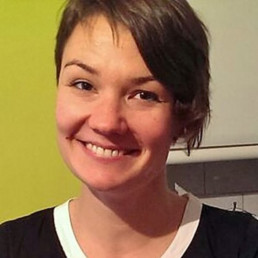
Written by Terra Glowach
Lead Practitioner for literacy and decolonising the curriculum at Cathedral Schools Trust in Bristol
After a year of working with teachers across the curriculum to decolonise, I’d like to pass on some key lessons for new EDI Leads, Curriculum Leads, Lead Practitioners and anyone trying to do similar work in schools.
Here are my top 10. Some of these I got right first try; others I learned the hard way. Hope it helps.
- General reading on the topic of anti-racism, decolonising, and education will give you the knowledge and confidence to have critical discussions, and wider frameworks for doing anti-racism work in schools will give you an idea of where to start. But the impactful work starts when you look at your specific school cohort, the data on ethnicity, outcomes and behaviour, and qualitative data on the experiences of Black and Asian staff and students. Know the specific and concrete issues in your institution. For my school, the issues were a lack of Black representation in the curriculum, the teaching staff, and in top sets. You can’t get people on board unless you can present the problem in cold hard numbers, and show that it’s in their immediate context.
- Seek out local academics who are working on decolonising and race equality within the Education faculty of your nearest universities first, and those passionate enough to work with schools even if they are not in the Education faculty. Teachers are disciplinary experts, researchers, community workers and curriculum designers, but rarely recognised as such. Organising discussions between subject leads and academics working in the same discipline to tackle what decolonising looks like in their subject gives teachers this recognition. Academics have often done their decades in school teaching, and can bring fresh research and challenging ideas to the table. Teachers, in turn, get to practice criticality in the face of research and work out what approach would work best for them in their context. My first go at providing readings for decolonising Maths didn’t stick because it necessitated the addition of history content which the teachers felt was forced. But Prof Alf Coles pointed out that decolonised pedagogy was a powerful way to both respect students’ ways of knowing and improve attainment. Get the experts in!
- Disrupt the school culture and curriculum by centering voices which have been previously marginalised. For example, I got Somali students to teach Somali to their teachers, and prepared form time materials, a whole-school assembly and a scheme of work on Somali contributions to UK communities and literature. Show people that the status quo can shift, and take the blinders off. You have to model decolonising work and show how it creates belonging, a more informed curriculum narrative, and a sense of excitement and discovery – THEN start getting people on board for work across the curriculum..
- If you are white, find the Black and Asian staff in school and the academics and practitioners out in the local community who have been doing this work longer than you and with a far better idea of how and why it should work. Put them forward for the opportunities and pay that you are offered but which they deserve, and watch them knock the dust off your school.
- Model what colonial frameworks and lenses look like in textbooks and in practice – have discussions about the limitations of these, how they position the global majority and the Global South, and the way they reproduce racial hierarchies. So for History, Science or Geography, is the seizure of land from indigineous peoples, the extraction of natural resources and the pollution of their land, air and water presented as an unfortunate but inevitable consequence of competitive capitalism and the discovery doctrine? Do you look at what established, indigenous science and resource management achieved and how this was exploited? Do you consider what fair trade and sustainable, mutual development might have looked like?
- Do form-time focus group and questionnaire research with the students so you promote discussion and give space for students to feed in anonymously. Use the collated data – like the percentage of students who want more Black representation – and powerful anecdotes from students as stimulus for planning. Go back to students with these plans , and check back after a term or a year to ask them how your school is doing. So often we ask for student voice and don’t keep students in the loop. Why not make them your associates?
- Staff need reading and training on how to talk about race, and how to structure and deliver a curriculum that empowers rather than silences, humiliates and traumatises. Just like students, they need to see this modelled in their own discipline (not just yours).
- Students at my school said effective discussion facilitation was key to challenging racist ideas in their curriculum and providing a safe space for people to explore and develop more informed opinions without ego or defensiveness getting in the way. If oracy and explorative discussion isn’t explicitly taught in your school’s classrooms, this may seriously hamper your progress.
- Show off and celebrate the work teachers have done to decolonise the curriculum in your school on a public forum. Think newspaper article, conference, festival, exhibition, trust-wide INSET day. They are leaders and change agents, and deserve recognition. It will also inspire the people waiting in the wings to join in and make a difference.
- You will soon realise that you have only scratched the surface, and that school priorities may change with the news cycle. This is unglamorous, thankless, difficult and ground-up work that has been going on for centuries. You are not a pioneer. Find and maintain your network – you will need each other.
“I’m in hospital Liz.”
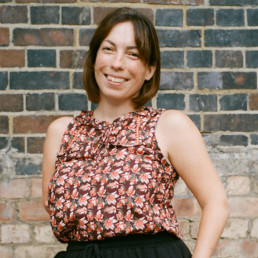
Written by Liz Wright
Elizabeth Wright FRSA is an editor, consultant, speaker, and activist. She brings forth all of her life experience to challenge people around disability, diversity, and inclusion.
I gulped at the message. It was from Jade, my graphic designer for Conscious Being and we were a week out from releasing issue 2. As a magazine editor, as a writer, as a speaker and consultant, I am so used to working to deadlines that my first thought was how are we going to get this issue out on time.
For years now I have been jumping to so many other people’s tunes, to doing everything possible to reach the needs of the client, without actually looking at and addressing my own needs. I am a disabled woman and live everyday with the effects of this identity. Tiredness from PMS, experiences of ableism, and using more energy than a non-disabled person to move my limb different body, is my reality every day, every month. Like a yoyo, my energy levels are unpredictable; my muscle pain is unpredictable. Everything I do, by default, is slower than someone with two hands and two legs. And yet, for years, I would push on, trying to keep up with my non-disabled peers.
In the past year I have decided that enough is enough when it comes to stretching my lovely body beyond its limits – all to please others who don’t know the actual lived experience of my impairment. Boundaries have been key to finding that sweet spot. Placing boundaries around my time and energy levels means that I am finding it a lot easier to say no to people and to stand up for myself in demanding that my needs be met too. The difference in myself has been astounding – I am more productive when working because I have had the rest that I need, I am more joyful, and dare I say it, interesting, because I actually make time to go places and see people. Life has blossomed as it hasn’t done in a very long time.
My activism has gone to the next level too – I am proud of my limb different body and what it has done for me and what I know it will do for me in the future. It has taught me many lessons and given me deep knowledge about the flaws in society and how we have to have structural and cultural change around work and success. My physical and mental fatigue wasn’t because of my impairment, it was because of the undue pressure that society puts on us to be productive and to ignore our very basic human needs to rest and relax.
When I started the magazine Conscious Being, a magazine by and for disabled women and non-binary people, I knew that I only wanted to hire other disabled creatives who deserved a platform and a space of their own. With as fair and equitable pay for these creatives as I could afford. I also knew that I wanted the core editorial and creative teams to feel that their health and wellbeing took precedence over anything else. I never wanted anyone to feel that they couldn’t tell me when they weren’t well and when they needed rest and a day off. I wanted Conscious Being to reflect the core of what I had learnt about taking care of myself – that when we look after and prioritise ourselves and our needs, that is when we can meet the needs of others in a beautiful and empathetic way.
Jade was in hospital and she wasn’t sure how long she would be in there for. As much as a slight panic hit my core first, that residual fear of not meeting deadlines, I knew that Jade’s health and wellbeing was more important than any release date of a magazine. And as Jade’s boss I told her so. I took hold of the reins, I assured her that we would work with her timings and that she had to just focus on recovery now. At the end of the day, disabled or not, we are only human, not machines. And as much as the world we live in would like you to believe that we don’t have a choice, unless your job deals in life and death situations, we can choose to push back deadlines, say no to things, and demand that our needs be met.
Issue 2 of Conscious Being came out on the 7th of September. A week late, but a much better magazine for it. The way the team pulled together and rallied around Jade was inspired. And the end result has been a happier and healthier graphic designer and a magazine and team that we can all be proud of.
—
We would like to thank Diverse Ed for being a sponsor of Conscious Being Magazine – the magazine by and for disabled women and non-binary people. If you would like to be a sponsor in the next issue please reach out to Editor-in-Chief Liz Wright at – liz@consciousbeingmagazine.com
You can grab your copy of issue 2 here – Conscious Being Magazine
Challenging conversations: Compliance through fear, or growth as a result of transparency and kindness?

Written by Sarah Johnson-Scott
Vice Principal of a large secondary school in West London. January 2021 Cohort of The Academy of Women’s Leadership.
What is the purpose of a challenging conversation?
Are they opportunities to: raise your voice at others to give them a dressing down; shout at them for making a mistake; assert your power or position; gain compliance through fear and therefore stifle and destroy the creativity, problem solving skills and ultimately output of your team? No, no, NO!
Can they be avoided? NO!
In highlighting that ‘the culture of any organisation is shaped by the worst behaviour the leader is willing to tolerate,’ Gruenter and Whitaker show us the impact of not having challenging conversations. As leaders we will accept and be seen to accept behaviours which are not acceptable in the workplace – if we don’t care as leaders, then no one cares. There is only one ending to this; a toxic culture, where people are unhappy, are not collegiate and productivity is low. Toxic cultures take a grip like quicksand. They are extremely difficult, and sometimes impossible to overcome.
Is there support in ‘mastering challenging conversations?’ YES!
As part of The Academy of Women’s Leadership, the inspiring Diana Osagie led us through an excellent session on ‘How to master difficult conversations,’ across a range of contexts including challenging conversations, holding staff to account and dealing with difficult people. By providing us with three different scripts for leading challenging conversations in each of these contexts, Diana left us feeling empowered, courageous and brave about leading these in future.
What were the top 5 takeaways from Diana’s session?
- Remembering that the behaviour is theirs….so don’t apologise for your stance (you are the leader and you have decided that there is a reason for a challenging conversation).
- Acknowledgement and acceptance that challenging conversations will test your courage and resilience.
- The challenging conversation scripts are invaluable – having a script to tweak when under pressure as a leader is extremely reassuring! They also support in running through the conversation and desired outcomes beforehand.
- The stages of a challenging conversation (you will have to join The Academy of Women’s Leadership to find out what these are!)
- Get some support for yourself – find an appropriate person in your organisation you can talk to about the challenging conversation (they’ve almost definitely led these before).
What’s the future of challenging conversations?
As leaders we recognise that challenging conversations are part of our role, but more crucially are essential for a positive organisational culture, happy staff and excellent outcomes. If they are led with clarity and kindness, and are received appropriately, challenging conversations should promote growth (potentially on both sides) – otherwise what is the point?

